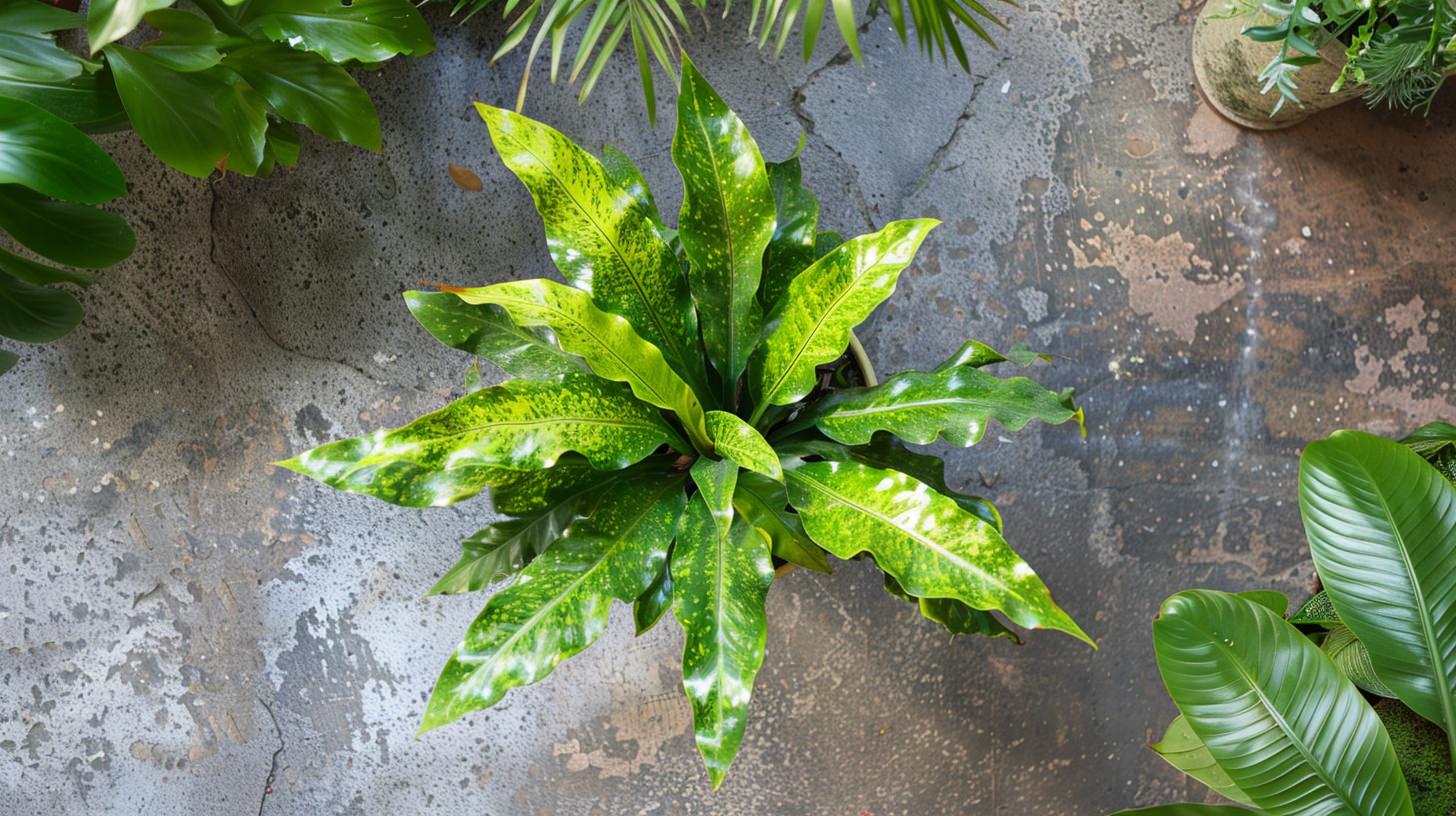
Are you a budding plant enthusiast eager to dive into the world of DIY plant variegation propagation? Imagine cultivating a lush collection of vibrant, variegated plants right in the comfort of your home with simple and effective techniques. In this blog post, we’re unveiling a treasure trove of DIY plant variegation propagation hacks for beginners, empowering you to nurture and propagate strikingly beautiful plants with confidence and success. Let’s embark on a green-fingered journey filled with growth, creativity, and the joy of cultivating nature’s wonders.
Essential Tools and Materials for DIY Plant Propagation
Plant propagation, especially variegated plants, requires specific tools and materials to ensure successful growth. Here’s a breakdown of what you’ll need to kickstart your propagation journey:
Tools for Variegated Plant Propagation:
-
Sharp pruning shears or scissors for precision cutting
-
Clean propagation containers or pots to house the plant cuttings
-
Rooting hormone to aid in root development
-
Spray bottle for misting and maintaining humidity levels
-
Small gardening knife for careful plant handling
Materials for Variegated Plant Propagation:
-
Well-draining potting mix suitable for the plant species
-
Perlite or vermiculite for added aeration in the soil mix
-
Clear plastic bags or plastic propagation domes for creating a humid environment
-
Grow lights or a warm, bright area for optimal light exposure
-
Watering can with a narrow spout for targeted watering
It’s essential to gather all the necessary tools and materials before starting the propagation process to ensure a smooth and successful journey. If you need to source these items, reputable gardening stores like Gardener’s Supply Company offer a wide selection of high-quality tools and materials for plant propagation.
Selecting the Right Variegated Plants for Propagation
When embarking on your DIY plant propagation journey, choosing the right variegated plants is crucial for success. Here are some key considerations and recommendations for beginners:
Best Variegated Plants for Beginners:
- Pothos (Epipremnum aureum): Known for easy propagation and striking variegation patterns.
- Spider Plant (Chlorophytum comosum): Ideal for beginners due to its adaptability and fast growth.
- Snake Plant (Sansevieria trifasciata): Low-maintenance plant with beautiful variegation options.
- Prayer Plant (Maranta leuconeura): Unique patterns and colors make it a popular choice for propagation.
Factors to Consider When Selecting Plants:
- Growth habit: Choose plants that have a healthy growth habit and show potential for propagation.
- Variegation intensity: Look for plants with strong variegation patterns for visually appealing results.
- Maintenance level: Opt for plants that align with your care routine and expertise as a beginner.
- Availability: Select variegated plants that are easily accessible in your area or through reputable online suppliers.
Before starting the propagation process, ensure you have selected healthy variegated plants that meet these criteria to increase the likelihood of successful propagation. If you’re unsure where to find these plants, established nurseries like Burpee offer a wide range of variegated plant options suitable for beginners.
Propagation Methods for Variegated Plants
Delving into the realm of DIY plant variegation propagation opens up a world of exciting techniques to explore. Here are some effective methods tailored for beginners looking to propagate their beloved variegated plants:
Overview of Variegated Plant Propagation Techniques:
-
Cuttings: One of the most common and straightforward methods involving the removal of a healthy cutting from the parent plant to initiate root growth.
-
Division: Suitable for plants like spider plants, where you separate the rooted offsets or pups from the main plant to create new plants.
-
Layering: A method that encourages roots to grow from a stem while still attached to the parent plant, allowing for easy separation once roots are established.
-
Seed Propagation: For plants that produce viable seeds, this method involves sowing seeds in a suitable growing medium and providing optimal conditions for germination.
Step-by-Step Guide to Propagation Through Cuttings:
- Select a healthy stem with at least two nodes, ensuring it has mature leaves and no signs of disease.
- Use sharp pruning shears to make a clean cut just below a node, removing any excess leaves from the lower portion of the cutting.
- Dip the cut end in rooting hormone to stimulate root growth.
- Plant the cutting in a well-draining potting mix and maintain consistent moisture levels.
- Place the cutting in a warm, bright location with indirect light to encourage root development.
Mastering these propagation methods will empower beginners to propagate variegated plants successfully and expand their plant collection with beautiful, unique specimens. For further guidance on plant propagation tools and techniques, renowned gardening resource sites like Gardener’s World offer valuable insights and recommendations tailored for gardening enthusiasts of all levels.
Troubleshooting Common Issues in Variegated Plant Propagation
As with any gardening endeavor, variegated plant propagation may encounter challenges along the way. Familiarizing yourself with common issues and their solutions can help beginner propagators navigate potential obstacles effectively. Here are some common problems and troubleshooting tips to ensure successful variegated plant propagation:
Identification and Solutions for Common Propagation Problems:
-
Root Rot: Caused by overwatering or poor drainage, leading to the rotting of the plant’s roots. To address this issue, adjust watering frequency and ensure proper soil drainage.
-
Wilting Leaves: Could be a sign of underwatering or excessive sunlight exposure. Adjust watering schedule and place the plants in a location with adequate shade.
-
Slow Root Growth: If roots are slow to develop, consider misting the cutting more frequently or applying a gentle rooting hormone to stimulate root development.
Preventing Diseases During the Propagation Process:
-
Sterilize Tools: Before making any cuts, ensure pruning tools are clean and sterilized to prevent the spread of diseases between plants.
-
Monitor Humidity Levels: Maintain optimal humidity levels around propagating plants to prevent the buildup of moisture-related diseases like mold or mildew.
-
Proper Air Circulation: Ensure good air circulation around plants to reduce the risk of fungal infections and promote overall plant health.
Tips for Maintaining Optimal Conditions for Successful Propagation:
-
Consistent Moisture: Monitor soil moisture levels regularly and adjust watering frequency based on plant needs.
-
Controlled Light Exposure: Place propagated plants in a location with indirect sunlight to avoid intense light exposure that may stress young plants.
-
Regular Inspection: Check plants regularly for signs of pests, diseases, or growth issues to address problems promptly.
By implementing these troubleshooting tips and proactive measures, beginners can maintain a healthy propagation environment and increase the chances of successful variegated plant propagation. For additional insights on plant care and troubleshooting, reputable gardening resources such as Gardening Know How offer a wealth of information to support plant enthusiasts at every stage of their gardening journey.
Caring for Propagated Variegated Plants
Successfully propagating variegated plants is only the beginning; to ensure their continued growth and vibrancy, proper care and maintenance are essential. Here are some tips and strategies for caring for your propagated variegated plants, tailored to beginners looking to nurture their plant babies to maturity:
Transplanting Tips for Propagated Variegated Plants:
-
Choose a Suitable Pot: Select a pot that allows for proper drainage and provides ample space for the plant’s root system to grow.
-
Careful Transplanting: Gently remove the propagated plant from its current container and transplant it into the new pot without causing damage to the roots.
-
Fresh Potting Mix: Use a well-draining potting mix that suits the plant species to promote healthy root development in the new container.
Proper Watering and Feeding of Young Plants:
-
Watering Schedule: Establish a consistent watering schedule based on the plant’s moisture needs and adjust as necessary to prevent overwatering or underwatering.
-
Feeding Routine: Consider using a balanced fertilizer or organic plant food to provide essential nutrients for optimal growth and variegation maintenance.
-
Monitor Plant Health: Keep a close eye on any changes in leaf color, texture, or growth patterns as indicators of the plant’s nutrient requirements.
Strategies for Promoting Healthy Growth and Variegation Maintenance:
-
Optimal Light Exposure: Position variegated plants in a location with sufficient indirect sunlight to encourage vibrant variegation patterns.
-
Regular Pruning: Trim any yellowing or damaged leaves and promote bushier growth by pruning to shape the plant effectively.
-
Supportive Environment: Maintain consistent temperature and humidity levels suitable for the plant species to foster healthy growth and variegation expression.
Implementing these care strategies will not only support the growth and development of propagated variegated plants but also provide beginners with a hands-on learning experience in plant care and cultivation. For additional guidance on plant care products and techniques, trusted gardening brands like Miracle-Gro offer a range of solutions tailored to the needs of plant enthusiasts at every skill level.
Wrapping Up Your DIY Plant Variegation Propagation Journey
As you conclude your exciting venture into propagating variegated plants, it’s important to reflect on the valuable lessons learned and celebrate your successful propagation efforts. Here are some final thoughts to wrap up your DIY plant variegation propagation journey as a beginner:
Reflecting on Your Propagation Experience:
-
Celebrate Achievements: Acknowledge the growth and resilience of your propagated variegated plants as a testament to your dedication and care.
-
Learn from Challenges: Embrace any setbacks or challenges encountered during the propagation process as valuable learning opportunities for future growth.
-
Share Your Success: Consider sharing your propagation journey with fellow plant enthusiasts to inspire and educate others in their plant propagation endeavors.
Continuing Your Plant Parenthood:
-
Nurture Your Plants: Maintain a consistent care routine for your propagated variegated plants, ensuring they receive the attention and support needed for continued growth.
-
Expand Your Plant Collection: Explore new variegated plant species and propagation techniques to broaden your horticultural knowledge and enhance your green space.
-
Seek Community Support: Join gardening forums or local plant groups to connect with like-minded individuals and seek advice on plant care and propagation.
Embracing the Joy of Growing with Strikingly Beautiful Plants
Your journey into DIY plant variegation propagation has not only enriched your indoor or outdoor spaces with vibrant foliage but has also nurtured your passion for gardening and plant care. As you continue to explore the world of horticulture, remember to cherish the beauty and diversity of nature’s creations through your propagated variegated plants.
For ongoing plant care tips and gardening inspiration, reputable gardening resources like The Home Depot Garden Club offer a wealth of information and community support for plant enthusiasts of all levels. Keep nurturing your green thumb and watch your variegated plants thrive and flourish in the loving care of a dedicated gardener.
FAQs on DIY Plant Variegation Propagation
Q: Can I propagate variegated plants from seeds, or is it better to use cuttings?
A: While some variegated plants can be propagated from seeds, many enthusiasts prefer using cuttings for a quicker and more reliable propagation process, maintaining the desired variegation patterns.
Q: How often should I water my propagated variegated plants?
A: The watering frequency for propagated variegated plants varies based on factors like plant species, potting mix, and environmental conditions. It’s recommended to check the soil moisture level regularly and water when the top inch of soil feels dry.
Q: What should I do if my variegated plant cuttings are not rooting?
A: If your variegated plant cuttings are slow to root, consider checking the humidity levels, adjusting the rooting hormone application, and ensuring the cuttings are in a warm and well-lit environment to stimulate root growth.
Q: How do I prevent pests from affecting my propagated variegated plants?
A: To safeguard your propagated variegated plants from pests, periodically inspect the plants for signs of infestation, practice good hygiene with your gardening tools, and consider using natural pest control methods like neem oil or insecticidal soap.
Q: Is it necessary to feed my propagated variegated plants with fertilizer, and if so, how often?
A: Providing your propagated variegated plants with a balanced fertilizer is beneficial for their growth and overall health. Fertilize the plants during the growing season at a diluted rate according to the specific plant’s feeding requirements to avoid over-fertilization.


